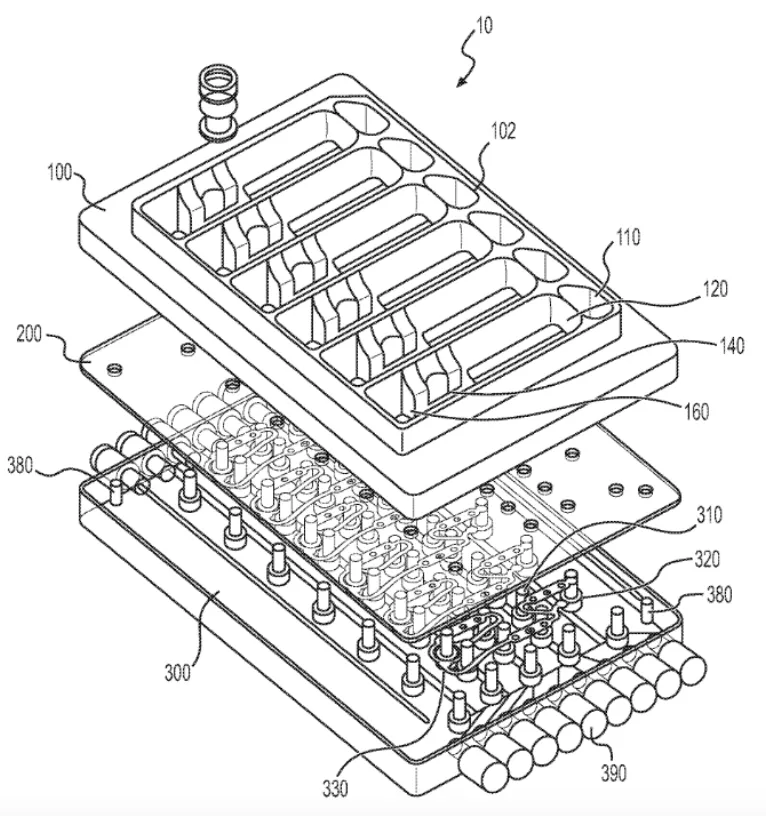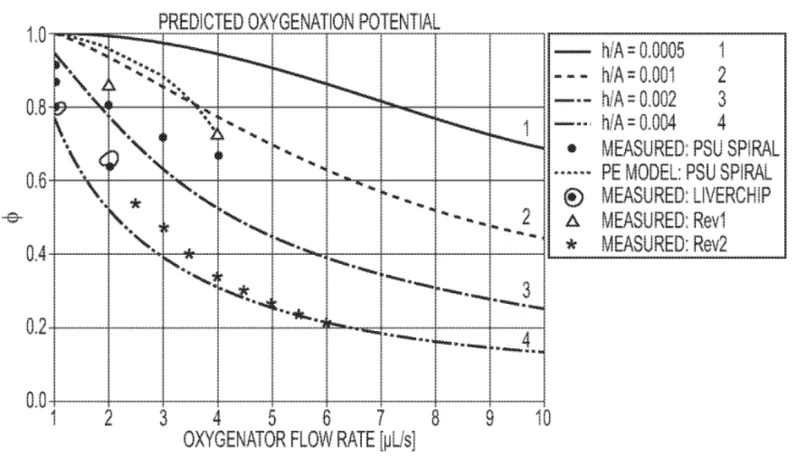Low Volume Fluid Oxygenator
This technology is a low volume fluid organ-on-a-chip system, including a specialized low volume fluid oxygenator. The system can help optimize a method of mimicking human physiology and can therefore serve as a tool in research and preclinical drug discovery.
Researchers
-
organ-on-chip platforms with reduced fluid volume
United States of America | Granted | 12,065,635
Figures
Technology
The device is made up of a fluidic top plate and a pneumatic bottom plate with an elastomeric polyurethane membrane in between. The top plate contains at least one lane, within which there is at least one cell culture well, fluid oxygenator, and pump system. The oxygenator provides oxygen for the cells in culture to replicate physiological conditions. The oxygenator may feature a separate path for oxygenating fluid, which enables controlling and measuring fluid oxygen concentration, shortening diffusion length, and diffusing oxygen passively. The technology supports reduced fluid volumes, as it circulates fluid volumes below 1000 µL and ideally below 500 µL.
Problem Addressed
Preclinical testing for a drug’s safety and efficacy is an important step developers must take before clinical trials can begin. However, animal models used for this testing do not always translate to human physiology, leading to failures in clinical trials and the rejection of some drugs viable in humans. Organ-on-a-chip systems offer a more accurate simulation of human physiology through the use of natural or engineered tissues grown in microfluidic chips. There is a demand, however, for organ-on-a-chip systems with low circulating volumes of fluid to avoid the challenges and negative effects that dilution has on the accuracy, ease of use, and cost of organs-on-chips.
Advantages
- Easier detection of biomarkers produced in low quantities with less dilution
- Promotion of intercellular communication with less dilute autocrine compounds
- Less resources used because less drug mass is required to reach same initial concentration
- More accurate drug exposure over time compared to humans in vivo increases accuracy in modeling human response
- Adjustable to culture cells with different oxygen demands at varying seeding densities
Publications
Daniel Rodion Rathbone. A Low Volume Oxygenator for Open Well Liver-on-a-Chip Tissue Culture. Massachusetts Institute of Technology. 2018.
License this technology
Interested in this technology? Connect with our experienced licensing team to initiate the process.
Sign up for technology updates
Sign up now to receive the latest updates on cutting-edge technologies and innovations.

